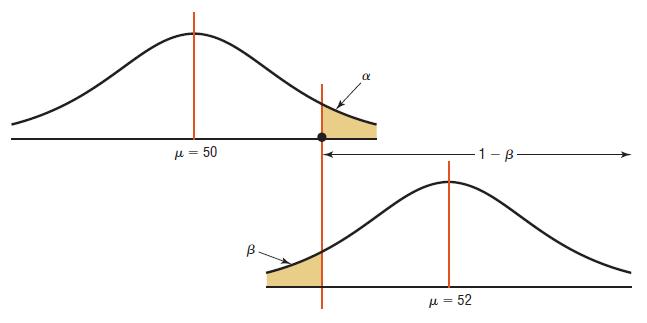The power of a test (1 b) can be calculated when a specific value of the
Question:
The power of a test (1 – b) can be calculated when a specific value of the mean is hypothesized in the alternative hypothesis; for example, let H0 : µ = 50 and let H1 : µ = 52. To find the power of a test, it is necessary to find the value of β. This can be done by the following steps:
Step 1

Step 2
Using the value of X̅ found in step 1 and the value of µ in the alternative hypothesis, find the area corresponding to z in the
 Step 3
Step 3
Subtract this area from 0.5000. This is the value of β.
Step 4
Subtract the value of β from 1. This will give you the power of a test. See Figure 8–41.
1. Find the power of a test, using the hypotheses given previously and α = 0.05, σ = 3, and n = 30.
2. Select several other values for µ in H1 and compute the power of the test. Generalize the results.
Data from Figure 8-41

Step by Step Answer:

Elementary Statistics A Step By Step Approach
ISBN: 9780077665807
9th Edition
Authors: Allan G. Bluman





